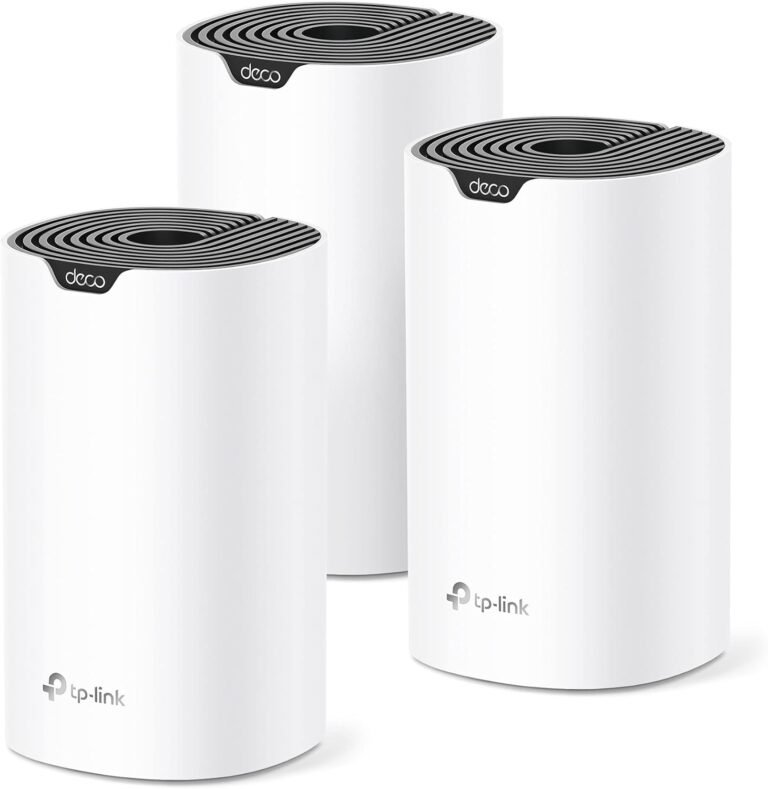Introduction
In today’s digital age, ensuring online privacy and security has become more important than ever. One effective tool that aids in achieving this is a Virtual Private Network (VPN). A VPN acts as a secure tunnel between your device and the internet, encrypting your data and masking your online activities. However, setting up a VPN can be intimidating for those who are new to it. That’s why we have put together this comprehensive guide to help you master VPN setup. In this article, we will provide step-by-step guides for setting up different VPNs on various platforms and devices, including Windows, Mac, Linux, Android, and iOS.
VPN Setup Guides for Windows
Step 1: Choose a VPN Provider
Before setting up a VPN on your Windows device, you need to choose a reliable VPN provider. Look for a provider that offers fast and stable connections, a wide range of server locations, and strong encryption protocols. Some popular VPN providers for Windows include NordVPN, ExpressVPN, and CyberGhost.
Step 2: Download and Install the VPN Client
Once you have chosen a VPN provider, visit their website and download the VPN client for Windows. Most providers offer a user-friendly client that makes the installation process straightforward. Follow the on-screen instructions to install the VPN client on your device.
Step 3: Launch the VPN Client and Sign In
After the installation is complete, launch the VPN client and sign in using your credentials. If you haven’t created an account with the VPN provider, you will need to do so at this stage. Make sure to choose a strong and unique password for added security.
Step 4: Connect to a VPN Server
Once you are signed in, you will be presented with a list of server locations. Choose a server location based on your needs, such as accessing geo-restricted content or optimizing for speed. Click on the connect button to establish a secure VPN connection.
Step 5: Configure VPN Settings and Preferences
Most VPN clients offer additional settings and preferences that you can configure according to your requirements. For example, you may want to enable features like a kill switch or DNS leak protection for enhanced security. Explore the VPN client’s settings to customize your VPN experience.
VPN Setup Guides for Mac
Step 1: Select a VPN Provider
When setting up a VPN on your Mac, the first step is to choose a reliable VPN provider. Look for a provider that offers a native VPN app for Mac users and prioritizes security and privacy. Some popular VPN providers for Mac include Surfshark, Private Internet Access, and VyprVPN.
Step 2: Install the VPN App
Once you have chosen a VPN provider, visit their website and download the Mac app. Open the downloaded file and follow the on-screen instructions to install the VPN app on your Mac. You may need to provide your admin password during the installation process.
Step 3: Launch the VPN App and Sign In
After the installation is complete, launch the VPN app and sign in with your credentials. If you haven’t signed up with the VPN provider, you will need to create an account. Ensure that you use a strong password and consider enabling two-factor authentication for added security.
Step 4: Choose a VPN Server Location
Once you are signed in, you will be presented with a list of server locations to choose from. Select a server location based on your needs, such as accessing region-restricted content or optimizing for speed. Click on the connect button to establish a secure VPN connection.
Step 5: Customize VPN Settings
Depending on the VPN app you choose, you may have the option to customize various settings. These settings can include protocol selection, DNS settings, and kill switch functionality. Explore the app’s settings to personalize your VPN experience on your Mac.
VPN Setup Guides for Linux
Step 1: Select a VPN Protocol
When setting up a VPN on Linux, you have the flexibility to choose from various VPN protocols like OpenVPN, WireGuard, and IPSec. Research and select the protocol that aligns with your requirements in terms of security and performance.
Step 2: Install the VPN Client
Once you have chosen a VPN protocol, you need to install the VPN client on your Linux distribution. The installation process may vary based on your Linux distribution, so consult the VPN provider’s documentation for specific instructions. Alternatively, you can use a command-line tool like openvpn to set up a VPN connection manually.
Step 3: Configure VPN Settings
After installing the VPN client, you will need to configure the VPN settings. This typically involves providing your VPN username and password, along with the server address and other connection details. Refer to the VPN provider’s documentation for the specific configuration steps required.
Step 4: Connect to the VPN Server
Once you have configured the VPN settings, you can establish a connection to the VPN server. This can usually be achieved by running the VPN client or using the command-line tool. Verify the connection status to ensure that you are connected securely.
Step 5: Verify Your VPN Connection
After connecting to the VPN server, it is essential to verify your VPN connection. Visit a website that shows your IP address to confirm that your IP address has been masked and replaced with the VPN server’s IP address. This ensures that your online activities are protected.
VPN Setup Guides for Android
Step 1: Choose a VPN App
When setting up a VPN on your Android device, start by selecting a VPN app from a reputable provider. Look for apps that have positive reviews, a user-friendly interface, and advanced security features. Popular VPN apps for Android include NordVPN, ExpressVPN, and Surfshark.
Step 2: Download and Install the VPN App
Go to the Google Play Store and search for the VPN app you have chosen. Tap on the “Install” button to download and install the app on your Android device. Grant any necessary permissions during the installation process.
Step 3: Launch the VPN App and Sign In
Once the installation is complete, launch the VPN app and sign in using your credentials. If you haven’t created an account with the VPN provider, you will need to do so during this step. Consider enabling features like the VPN kill switch and split tunnelling for added control over your VPN connection.
Step 4: Connect to a VPN Server
After signing in, you will be presented with a list of server locations. Select a server location based on your needs, such as accessing region-restricted content or bypassing censorship. Tap on the connect button to establish a secure VPN connection.
Step 5: Verify Your VPN Connection
Once connected, it is essential to verify that your VPN connection is active and functioning correctly. Visit a website that displays your IP address, and ensure that it matches the IP address of the VPN server you are connected to. This confirms that your online activities are encrypted and anonymized.
VPN Setup Guides for iOS
Step 1: Choose a VPN Provider
When setting up a VPN on your iOS device, the first step is to choose a reputable VPN provider. Look for providers that offer a dedicated iOS app, reliable connection speeds, and a strong emphasis on privacy and security. Some popular VPN providers for iOS include ExpressVPN, NordVPN, and Private Internet Access.
Step 2: Install the VPN App
Go to the App Store and search for the VPN app you have chosen. Tap on the “Get” or “Install” button to download and install the app on your iOS device. Authenticate with your Apple ID if prompted.
Step 3: Launch the VPN App and Sign In
After the installation is complete, launch the VPN app and sign in with your credentials. If you haven’t registered with the VPN provider, you may need to create an account during this step. Consider enabling additional features like ad blocking and malware protection offered by some VPN apps.
Step 4: Connect to a VPN Server
Once signed in, you will be presented with a list of server locations. Choose a server location based on your requirements, such as accessing restricted content or optimizing for speed. Tap on the connect button to establish a secure VPN connection.
Step 5: Verify Your VPN Connection
After connecting to the VPN server, verify that your VPN connection is active and functioning correctly. Visit a website that shows your IP address and confirm that it matches the IP address of the VPN server you are connected to. This ensures that your online activities are protected and your data is encrypted.
Conclusion
Setting up a VPN may seem like a complex task, but with the right guidance, it can be relatively straightforward. In this article, we have provided step-by-step guides for setting up different VPNs on various platforms and devices, including Windows, Mac, Linux, Android, and iOS. Whether you are a beginner or an advanced user, these guides will help you configure VPN settings, connect to VPN servers, and troubleshoot common issues.
Remember, VPNs offer numerous benefits beyond privacy and security. They allow you to stream your favorite content from anywhere with a VPN for streaming, protect your online gaming sessions with a VPN for gaming, enable secure remote access for businesses with VPNs for businesses, and safeguard your privacy while traveling with VPNs for travel. It’s essential to choose the right VPN provider and follow the setup guides provided to make the most out of your VPN experience.
FAQ
| Question | Answer |
|---|---|
| What is a VPN and why do I need a VPN? | Please refer to our detailed guide on What is a VPN and why do I need a VPN?. |
| Is VPN illegal or is VPN legal? | To understand the legal aspects of VPN, please read our article on Is VPN illegal or is VPN legal?. |
| What are some free VPN services? | While free VPN services exist, they often come with limitations. Check out our article on Free VPN services for recommendations. |
| Can I use a VPN for torrenting? | Yes, VPNs are often used for torrenting. Learn how to choose the right VPN for torrenting in our guide. |
| How can a VPN enhance privacy when using public Wi-Fi networks? | VPNs encrypt your internet traffic, making it difficult for hackers to intercept your data. |
| How do I troubleshoot common VPN issues? | If you encounter VPN connection problems, try restarting your device, changing server locations, or contacting your VPN provider for support. |
Further Reading
| Website | Description |
|---|---|
| Comparitech – VPN Comparisons | A comprehensive comparison of popular VPN providers and their features. |
| VPN Laws and Regulations – Global | An overview of VPN laws and regulations around the world. |




